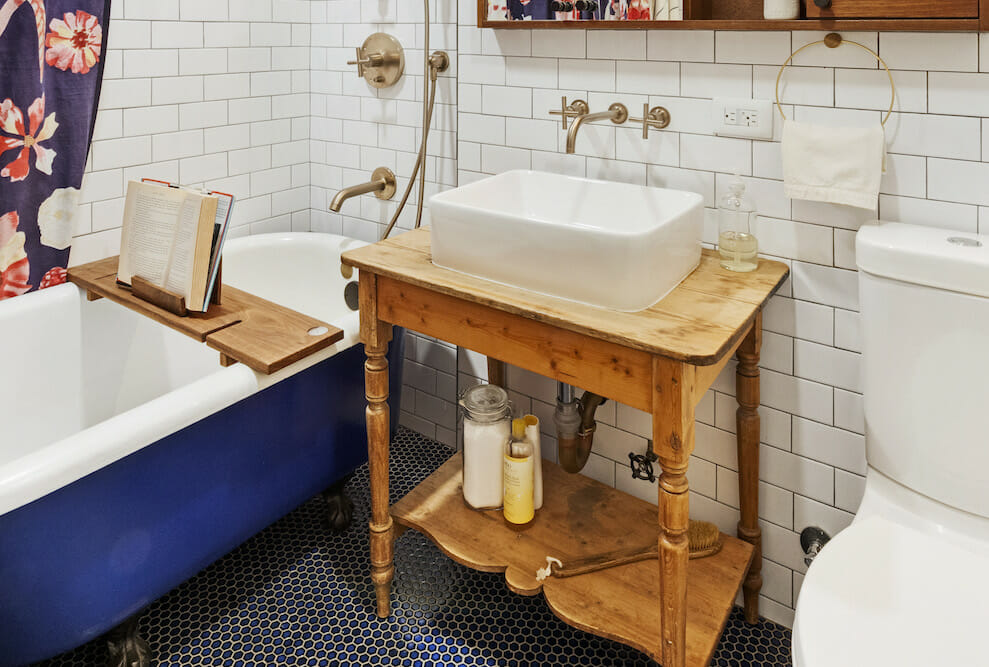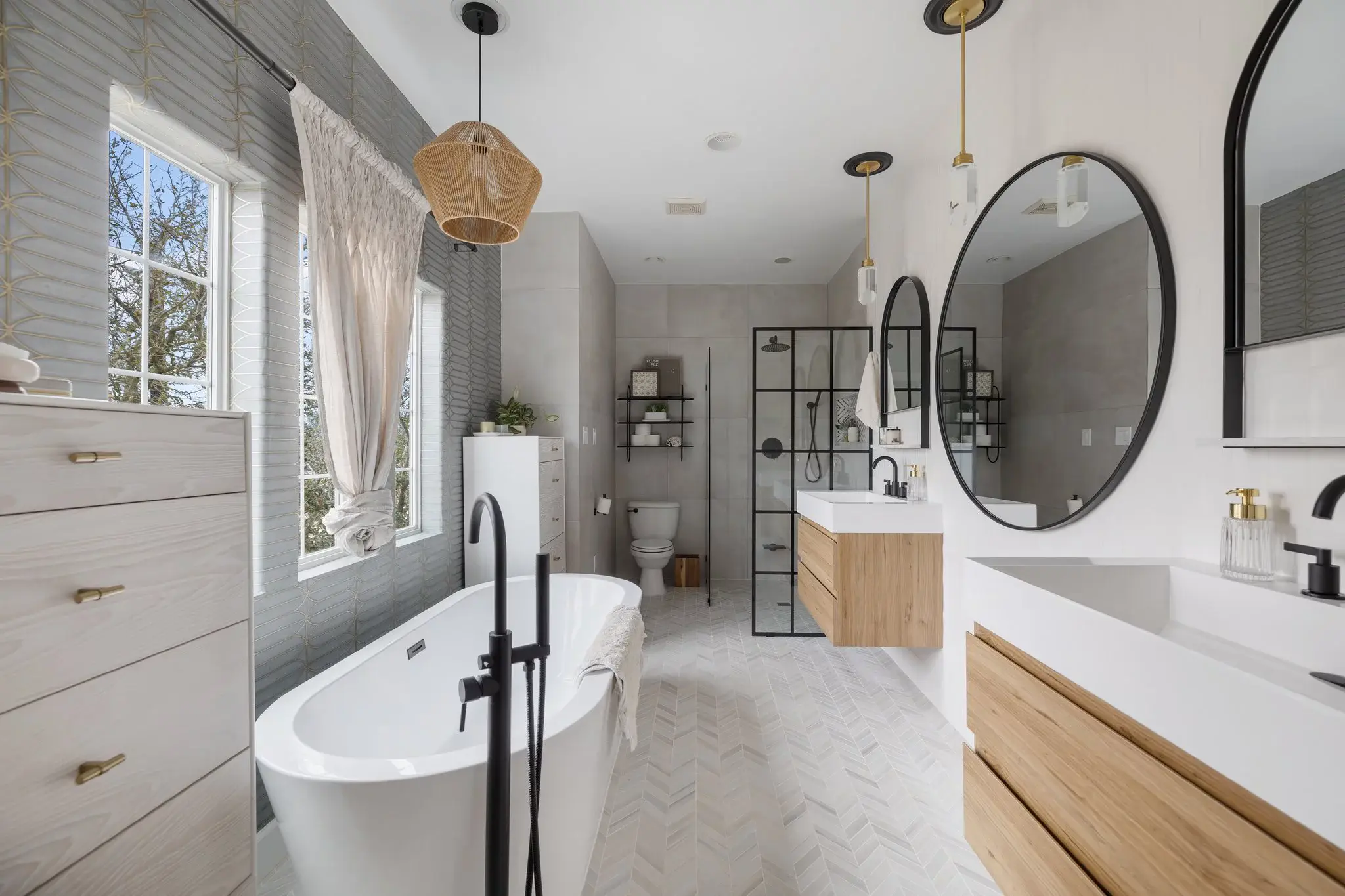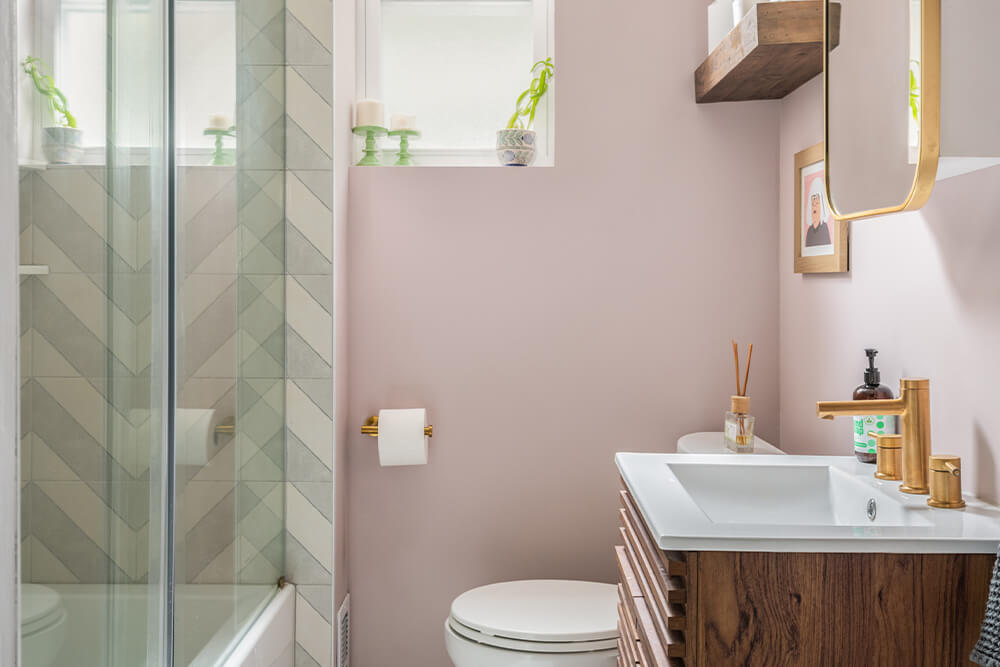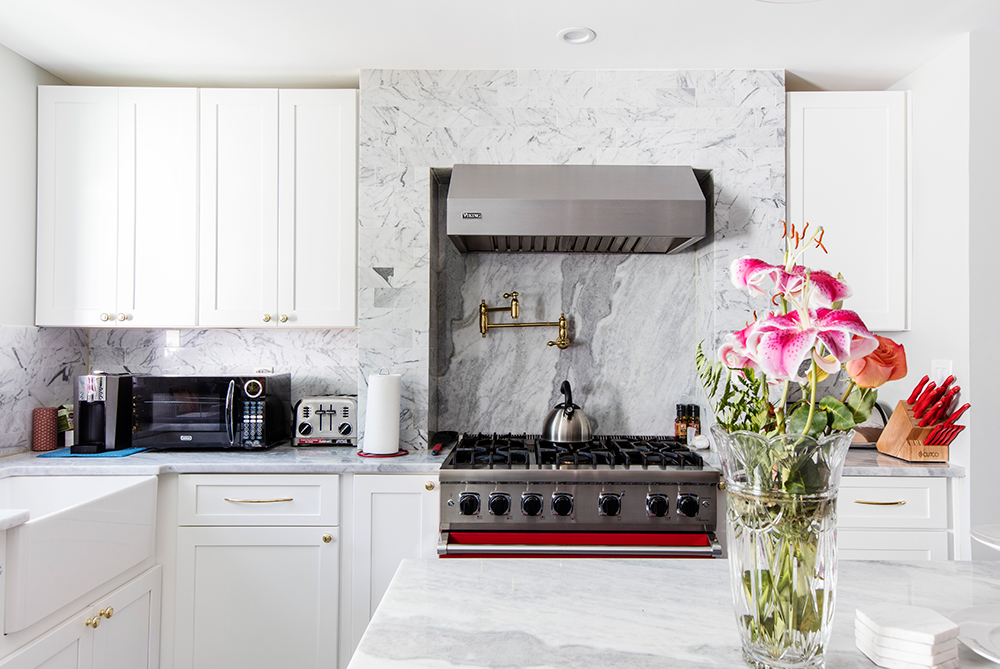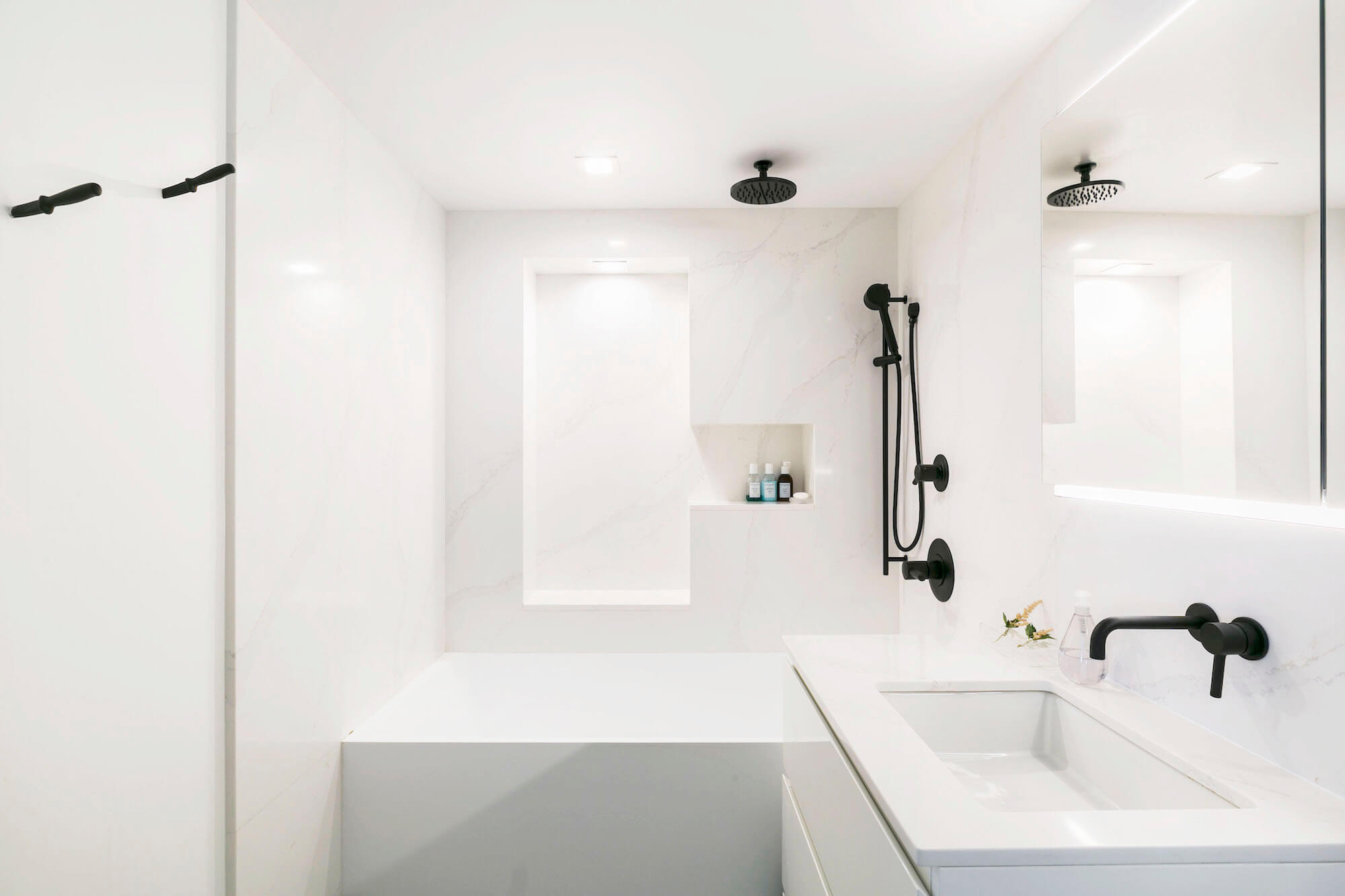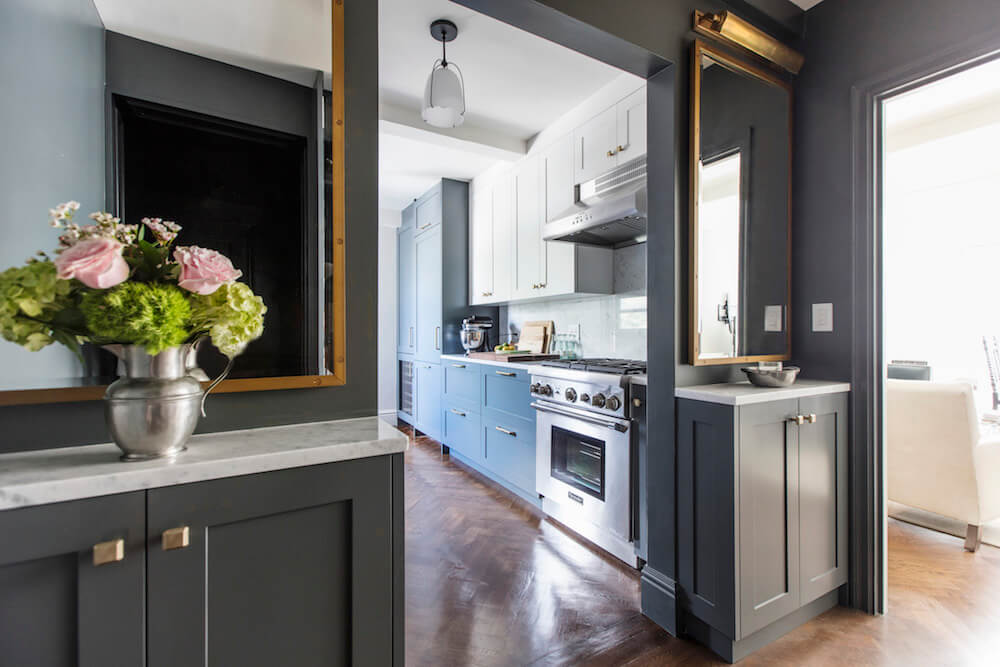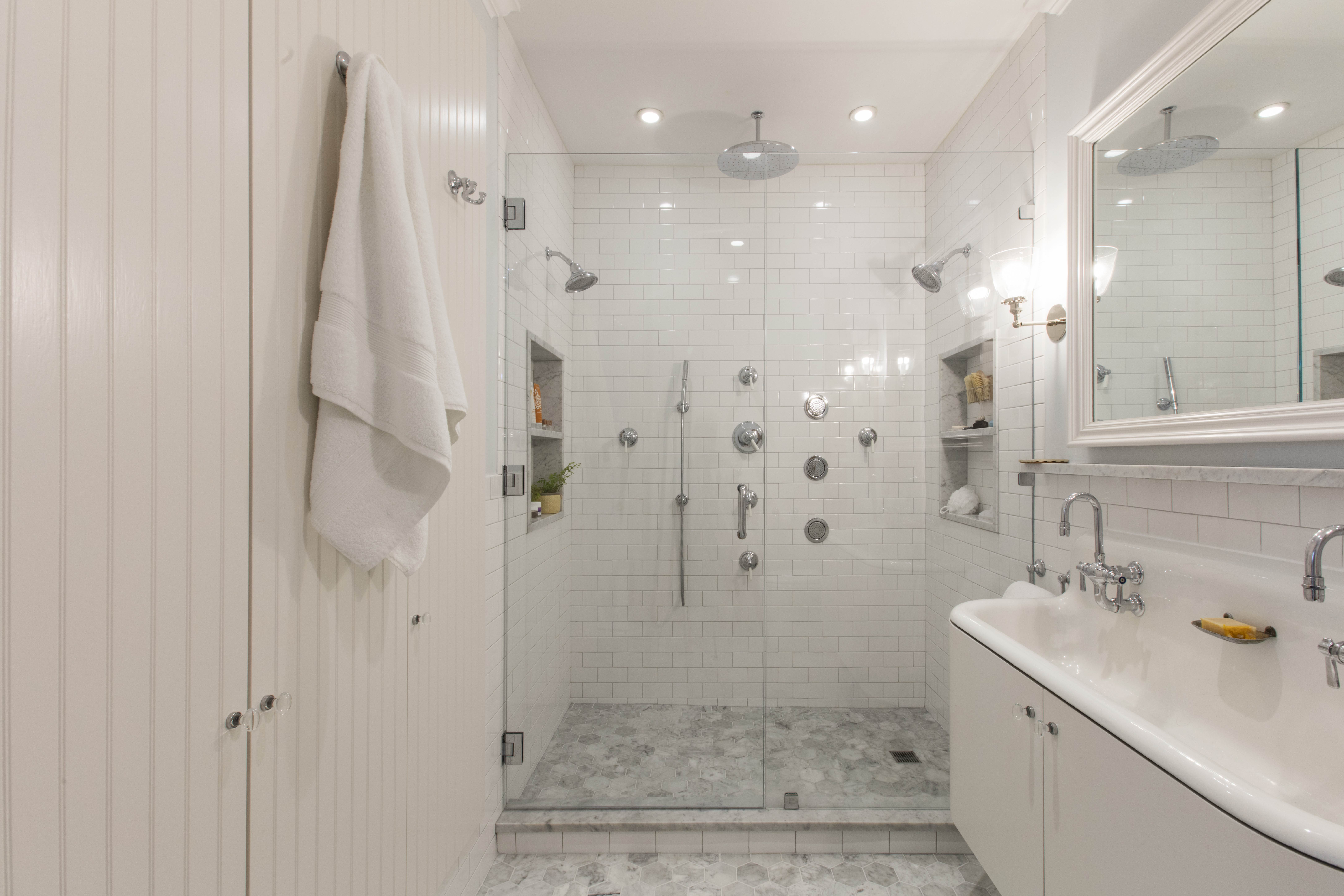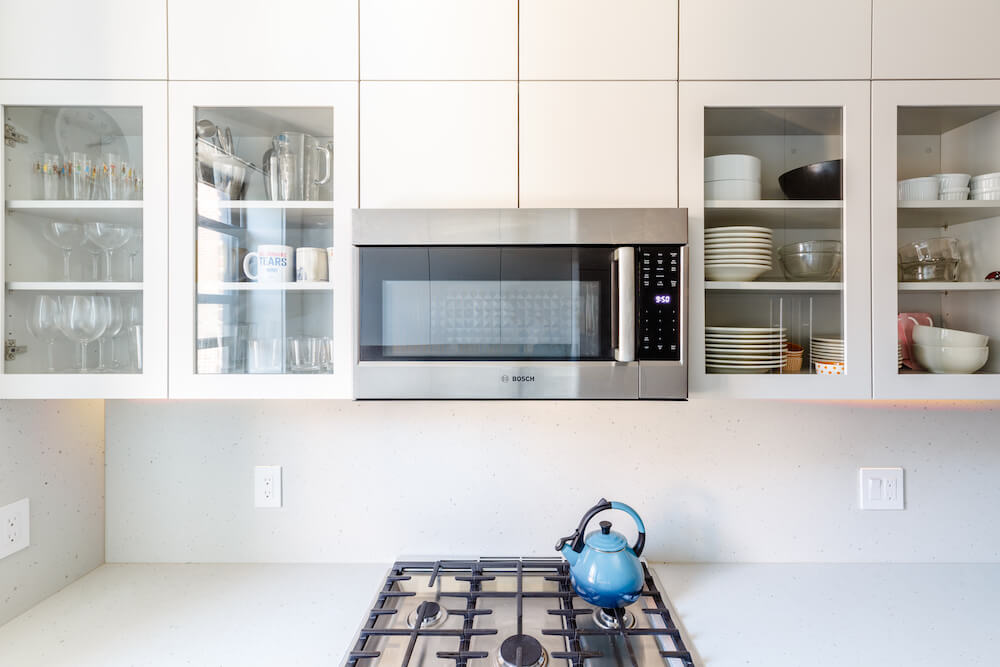A Bathtub Remodel Upgrades With Freestanding Tubs
With options in size, material, and shape, a relaxing room is only a soak away
Of all the features in the bath, the tub takes center stage. In particular, the freestanding tub can take on a shape that turns it into a sculpture and a unique focal point for the room. If you are considering adding a new dimension to your bathroom, read on for Sweeten’s bathroom remodeling ideas with a tub.
There have been a lot of advances since the days of the good, old clawfoot tub, although you can have that if you want it. There are loads of options to help you create a custom look, such as:
*Fluid, sculptural profiles in symmetrical and asymmetrical shapes
*Non-slip surfaces
*Color on the interior and/or exterior
*Backs with lumbar support
All major manufacturers, including American Standard, Signature Hardware, and DXV, offer a wide dollar range that can keep the price for your bathroom remodel within your budget.
Sweeten matches home renovation projects with vetted general contractors, offering guidance, tools, and support—for free.
Choose a style
Thanks to the sleek profiles of freestanding tubs, most styles will work with any type of décor, from traditional to transitional to contemporary. So if you select a style you like, then change your mind in a few years about the design of the bath, chances are you can keep the tub and it will still look right. Manufacturers often create “suites” of fixtures—matching sink, tub, and even toilet—if that’s the look you’re after.
Expect to find freestanding tubs in three basic shapes: oval, rectangular, and round. Most freestanding tubs come with the option of either a footed or “skirted” (concealed) bottom. These are the most common and popular styles:
Floor-set
Available in a range of profiles from oval or rectangular to round or square, these tubs sit directly on the floor, with the base covered by a “skirt.”
Slipper
Shaped like the footwear the name describes, this classic tub shape is higher on one side to encourage reclining. Some versions have equally high sides at either end. To enhance the slipper shape, this tub is most commonly specified with feet.
Soaking
This style came into vogue in the ‘90s with the emergence of the at-home spa movement and feng shui. The sides rise as high as the shoulders or neck of an average-size person, so the body is submerged in water. The circumference tends to be smaller than other tubs, so it doesn’t take an entire lake to fill with water.
Footed
Renovate expertly with Sweeten
Sweeten brings homeowners an exceptional renovation experience by personally matching trusted general contractors to your project, while offering expert guidance and support—at no cost to you.
You probably know it as the clawfoot tub; this bathing beauty conjures the ambiance of another era, minus the chore of filling it with water from a wooden bucket! Manufacturers make a variety of foot styles to lend the tub either a vintage or contemporary effect. Innovations include exterior surfaces that can take customized finishes, including paint in the color of your choice.
Extras
As with overall bath trends, you can find a few enhancements in some freestanding tubs, including removable pillows, chromotherapy, and air jets.
Consider the material
Today’s tubs are made to take daily use and exposure to all types of water and chemicals from soaps as well as cleansers. Still, you need to carefully consider your choice of materials, which affect durability and weight, and the tub’s installation. For instance, a lighter-weight tub, one that’s made of acrylic as opposed to cast iron, will be easier to maneuver during installation, and less likely to require additional support for the floor.
Acrylic
A type of plastic, this material is appreciated for its many attributes: lightweight with a high gloss, deep-color finish that allows most scratches to be buffed out. Acrylic also allows the water to keep its heat more readily than metals such as cast iron. Because it is a plastic that can be formed, it lends itself well to tubs with molded armrests or other detailing. Fiberglass reinforces the acrylic to help prevent cracking and chipping.
Metal
If a metal look interests you, you’re most likely to find it in the soaking tubs category, in copper or stainless steel. Be forewarned: This metal transmits heat, so your bathwater will quickly cool down.
Enameled cast iron
This classic, extremely durable material conveys a smooth, glossy finish. It transmits heat but it also holds heat, so it may take some finagling to get the bathwater the temperature you desire. Cast iron bathtubs are best used on ground floors. Homeowners should check with their plumber to see if additional structural support may be needed.
Measure properly
You must get accurate dimensions for your space and for the tub you are considering. In addition to the manufacturer’s dimensions, look in a showroom and take the measurement from the distance at the longest point of the tub.
Most freestanding tubs average about 5 feet by 2 ½ feet. Their luxurious reputation might cause you to think this type of tub only fits in a large bath. Since they don’t require an alcove or a platform, they can fit in many smaller bathrooms.
Plan before installation
Installation goes much like it does for any tub, with a few precautions:
Weight
When researching or shopping for tubs, find out how much the tub weighs, empty as well as full of water. Then consult with your contractor to determine if additional structural support is necessary.
Pipes
Before settling on your selection, locate the room’s water pipes and where you want to place the drain. Make sure you have enough floor space to position the tub. Check the width of doorways, hallways, and staircases by which the tub will be moved. You don’t want to suddenly discover you have to break through a wall to install that luxurious tub. Be aware that pipes that go from the wall to the tub may show. Consult with your contractor to find a version you can stand to look at day in and day out.
Faucet
With the tub standing alone on the floor, you may be wondering where the faucet goes. The most common solution is a floor-mounted fitting centered on the long or short side of the tub. This allows placement of the tub under a window or centered in a space; pretty much anywhere the plumbing lines will allow. If the tub can be installed close to the wall, particularly in a small bath, then a wall-mount tub filler will work.
Some manufacturers make tubs that permit a deck mount of the faucet and its handles. Ask to see all the configurations.
Drains are positioned either in the center or on the left or right. Consider the location of the plumbing in the bath before choosing or you will have to pay to have the pipes extended or rerouted.
Tips on maintenance
Follow your regular cleaning routine but only use manufacturer-recommended products. Not all cleansers work well on all surfaces. A lotion-like cleanser that is suitable for porcelain or enameled cast iron may scratch an acrylic tub.
Thoroughly rinse the surface after bathing and again after cleaning. Leaving cleanser on the tub can permanently harm the finish. Avoid wearing jewelry in the tub or anything else that might scratch acrylic.
The tub is one of the biggest expenditures you will make in your bath, so invest in quality. The manufacturer should offer a limited lifetime warranty. Follow the instructions for care, using only recommended products. Then breathe a sigh of true relaxation as you settle into the serenity of your beautiful freestanding tub.
When you’re ready to begin your bathroom renovation, securing the expertise of an experienced and qualified general contractor should be at the top of your list. Make sure they are licensed, insured, and have extensive knowledge working in your area. Work with Sweeten to connect with the best contractors.
—
Sweeten handpicks the best general contractors to match each project’s location, budget, and scope, helping until project completion. Follow the blog for renovation ideas and inspiration and when you’re ready to renovate, start your renovation on Sweeten.
